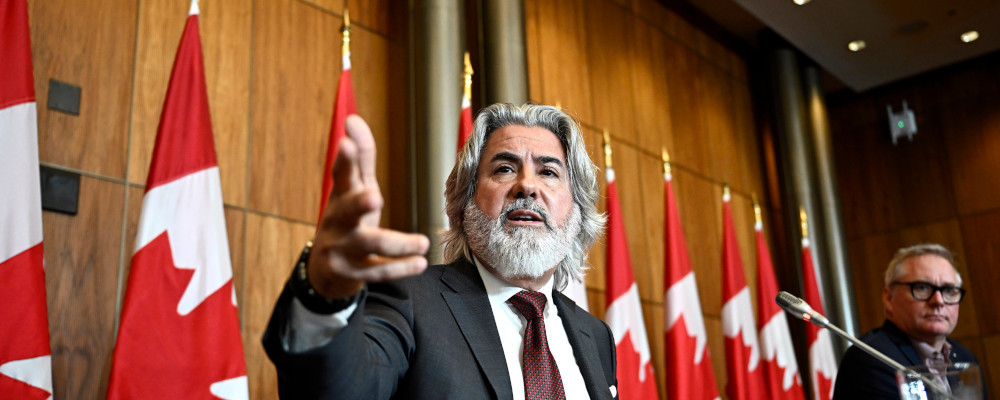Bell’s announcement this week that it is laying off thousands of workers—including nearly 500 Bell Media employees—has sparked political outrage with Prime Minister Justin Trudeau characterizing it as a “garbage decision.” The job losses are obviously brutal for those directly affected and it would be silly to claim that a single policy response was responsible. Yet to suggest that the government’s media policy, particularly Bills C-11 and C-18, played no role is to ignore the reality of a failed approach for which there have been blinking warning signs for years. Indeed, Trudeau’s anger (which felt a bit like a reprise of his Meta comments over the summer) may partly reflect frustration that his policy choices have not only not worked, but have made matters worse.
Bill C-11, the online streaming law that is now before the CRTC, was never really designed to address Bell’s broadcasting concerns. Indeed, the company made clear what it wanted: access to cheap U.S. programming. When the company appeared before the committee back in 2022, it said its primary risk was competition from foreign streaming services accessing the Canadian market directly and bypassing Canadian broadcasters. This challenge has been readily apparent for years. In fact, in 2011 I wrote about how this was likely to become a major issue for Canadian broadcasters dependent on licensing U.S. programming to profitably fill their broadcast schedules:
Once U.S. rights holders conclude that it is more profitable to retain the Internet rights so that they can stream their programs online to a global audience and capture the advertising or subscription revenues that come with it, Canadian broadcasters may find that they can only license broadcast rights with the U.S. rights holders competing directly with them via the Internet.

This was back in 2011. More than a decade later, Bell wanted the government to fix the commercial problem by intervening through Bill C-11:
“We can ensure the central role of Canadian broadcasters by securing access to foreign content. We can also incentivize foreign streamers to partner with Canadian broadcasters, much like foreign linear services have done for decades. We believe Bill C-11 should explicitly enable this.”
Bill C-11 rightly doesn’t do that, but removing licensing fees said to be worth $40 million was supposed to help. That approach of shovelling money through grants, tax credits, reduced fees, or regulated payments has been the government’s go-to strategy for years and the only thing it seems to bring are demands for more.
The layoffs on the news side of the business implicates both Bills C-11 and C-18. In the case of Bill C-11, broadcasters are still holding out hope that the CRTC will order the large online streaming services such as Netflix, Disney, and Amazon to contribute to their local news production costs. The Canadian Association of Broadcasters has asked the Commission to create a new News Fund that it would administer. Funding for the fund would come from the Internet streaming services, with 30 percent of their contribution allocated toward a sector with which they have virtually no connection whatsoever. Even if the CRTC agrees, the fund would not take effect until later this year and Bell was apparently unwilling to wait to see how it plays out.
While I have seen some suggest that Bill C-18 has nothing to do with radio station sales or layoffs, the government’s approach is inextricably linked to it. First, the government’s longstanding media approach has largely focused on print and digital news outlets, not broadcasters. For example, the labour journalism tax credit worth hundreds of millions of dollars excludes broadcasters. It is now worth nearly $30,000 per journalist, but broadcast journalists are not eligible. I think there are serious problems with this approach (not the least of which is the implications for press independence), but the government clearly made a bet that it could focus its attention on the traditional print sector with the expectation that hugely profitable companies such as Bell would continue to support their news divisions. Much like the mistaken bet that Facebook couldn’t live without Canadian news, the same may be true for parts of the broadcasting sector.

Second, the government promoted Bill C-18 as providing hundreds of millions to broadcasters for news. Indeed, the Parliamentary Budget Officer estimated that it would generate $329 million, with 75 percent of that money going to broadcasters. Given Bell’s position in the market, it stood to be one of the two largest recipients of those revenues (alongside the CBC), amounting to tens of millions per year. But as everyone knows, Bill C-18 ultimately only generated a fraction of what was promised, with a single $100 million payment from Google shared among all sectors. Once the administrative costs and lost Meta deals are taken into account, that number is closer to $75 million, some of which is a re-allocation of existing Google money.
For Bell, the revenues are even smaller, however, because the government then decided to cap the amount allocated from Bill C-18 to broadcasters at 30 percent or $30 million (the CBC picks up another 7 percent). In other words, broadcasters went from expecting a quarter billion dollars in annual payments from Bill C-18 to support news to just $37 million for the entire television and radio broadcast sector. Further, those radio stations that do not produce news content to be made available online aren’t eligible for anything and everyone has lost traffic and the resulting ad revenue due to the removal of links on Meta. To suggest that this had no impact on Bell’s media decisions this week is to engage in the same policy fantasies of the past few years that have cost hundreds of millions of dollars and placed the independence of Canadian media at risk.
This column originally appeared on michaelgeist.ca.
Recommended for You

‘A celebration of the spirit of Alberta’: Ryan Hastman on the political, economic, and cultural importance of the Calgary Stampede

‘Can we actually be an independent country?’: Michael Ignatieff on the 60th anniversary of Lament for a Nation

Fred DeLorey: Why the NDP may be in even bigger trouble than we think

DeepDive: Canada desperately needs its own Department of Government Efficiency—but one with a heart



